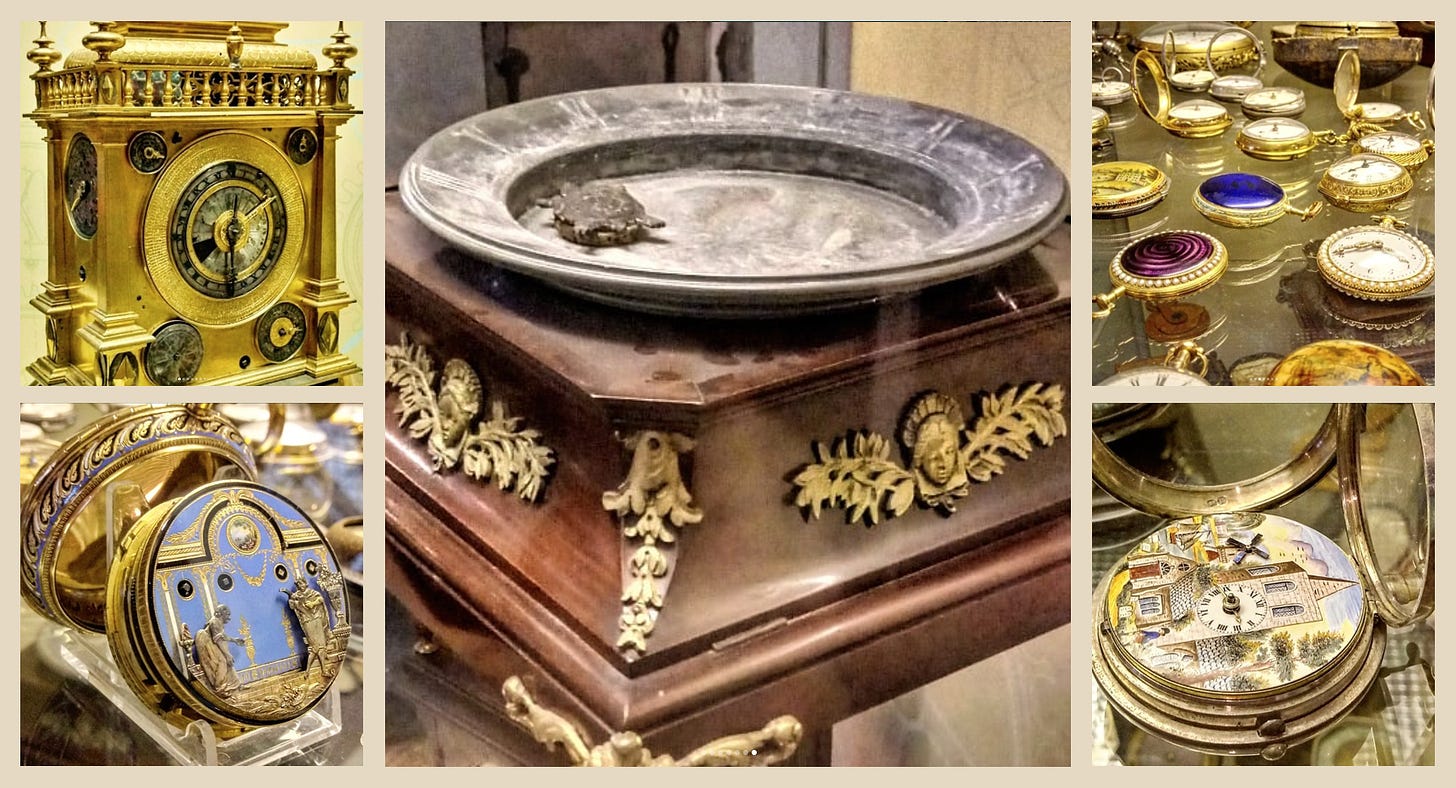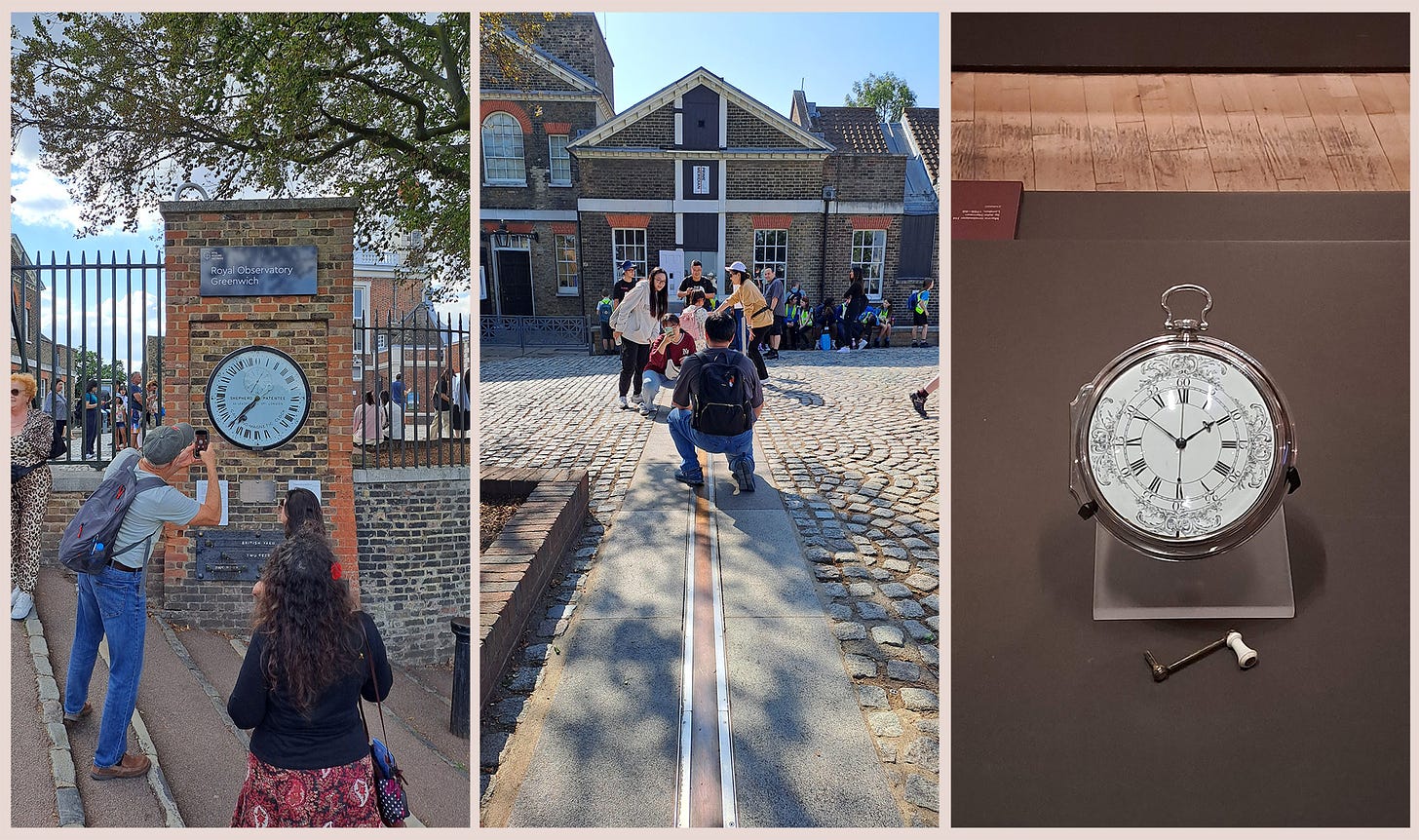Killing time
In a small room in the 12th century Moyse's Hall in Bury St Edmunds a turtle makes slow, steady revolutions of a shallow pewter dish of water, each turn taking a whole twelve hours to complete — the leaden creature can be placed anywhere in the dish, then after a few curious wiggles will always ‘magically’ return to the perimeter, its nose pointing towards the roman numerals engraved around the rim, and if left undisturbed will then continue on its measured journey around the dish.

The ‘Floating Turtle’ is indeed an ingenious timepiece, just one in an extraordinary assortment collected by Frederick Gershom Parkington, a popular musician of the 1930s, a founder of his eponymous Quintet, and a regular broadcaster in the early days of the BBC, whose portrait was featured in a Wills’s cigarette album of ‘Radio Celebrities’. The turtle clock is one of the more unusual specimens among a vast array of bracket clocks, long case clocks, lantern, mantle and table clocks, wrist watches, sundials and other unusual timepieces, said to now be worth many millions, and bequeathed to the city of Bury by Gershom Parkington in 1953, as a memorial to his son John, killed in World War Two. The rooms in Moyse's Hall are filled with ticking, chiming, whirring and clicking, thousands of interlocking rotating metal cogs and springs marking out intervals of time, seconds, minutes, hours... The turtle though is motionless, for ever marooned on the bottom of the waterless dish, its hidden workings remain unwound, the helpless beast condemned never again to complete a circuit of the dish, robbed of its sole purpose of existence of keeping time.
It's fascinating to watch people traversing the Prime Meridian line at the Royal Observatory at Greenwich, the excitement of having one foot in the western hemisphere and the other in the east, to be standing on the baseline for time zones around the world, at the 'home' of Greenwich Mean Time. This was my first, long overdue visit to Greenwich and the Royal Observatory, and Flamsteed House, the place where the Astronomers Royal had lived from 1675 until the 1940s. It's a fascinating place, where the scientific, historic, and mysterious intrigue collide — the observatory was the setting for an anarchist bomb plot in 1894 which was used as source material by Joseph Conrad in his book 'The Secret Agent' (Conrad is featured in The Rings of Saturn) — one of the first attacks of its kind on a cultural site.
However, the old line set into the cobbled courtyard of the observatory, which was established as the location of the ‘Prime Meridian’ in 1884, is no longer the official meridian line marking Longitude 0º, because since the introduction of GPS and satellite navigation in the 1980s, the official global Prime meridian is about 100 metres to the east of the Greenwich Observatory, somewhere among the trees and scrub of the park. So ironically, the old meridian line where everyone pauses for a selfie is not the centre of world time, no longer the dividing line between east and west, but is just a superficial line in the ground.

As international trade grew in the early 1700s, it became a necessity to improve navigation at sea, by mapping out the stars and creating an accurate time piece, which together could be used to calculate a ship’s position, to avoid running aground, losing ships and valuable cargoes, or to aid sea-born warfare — a ship’s latitude was reasonably easy to ascertain, but its longitude (position east or west) was much more of a problem. So in July 1714, the British government offered a £20,000 reward (equivalent to several million pounds today) to anyone who could determine longitude at sea within half a degree — this attracted huge interest, and some crazy ideas, but the most likely solution looked to be the development of a very accurate clock, together with the collection of astronomical data — hence why the Royal observatory was established.
By 1726, news of the longitude reward had reached John Harrison, a carpenter and self- taught clockmaker from Lincolnshire. Harrison was already making highly accurate longcase clocks, and had solved major problems to do with temperature change and friction. He started to develop sea clocks that would keep regular time, in spite of a ship's motion and temperature changes, and each timekeeper represented years of obsessive labour. By 1761, Harrison had solved the longitude problem by developing a series of clocks, each one better and more sophisticated than its predecessor — with his fourth “marine timekeeper”, now known as 'H4' (shown above right) he solved the problem and was able to claim the £20,000 reward. Harrison had spent 35 years of his life developing the most accurate mechanical clocks ever made.
Another extraordinary timekeeping device in the Royal Observatory is an Atomic clock, the “Hewlett Packard caesium beam frequency standard type 5061A”, which was used at the observatory from 1972 to 1996 to define Coordinated Universal Time (UTC), the international standard for time. The clock uses the oscillations of the electrons in caesium-133 atoms to keep time — it is said to be accurate to within one part in ten billion, which means that it loses only one second every 31.7 million years.
In ‘The Rings of Saturn’, WG Sebald often ponders the meaning of time, as he found the action of walking deeply contemplative, and it seemed to define his meandering literary style of using very long circumlocutory sentences. In chapter VI when he’s walking from Southwold, heading towards Dunwich, along the disused railway line, crossing the bridge over the River Blyth, he recalls a book by the Argentinian writer Jorge Luis Borges, in which he explores the ‘the denial of time’ as laid down by the curiously named ‘tenets of the philosophical schools of Tlön’.
“According to this principle, the future exists only in the shape of our present apprehensions and hopes, and the past merely as memory. In a different view, the world and everything now living in it was created only moments ago, together with its complete but illusory pre-history. A third school of thought variously describes our earth as a cul-de-sac in the great city of God, a dark cave crowded with incomprehensible images, or a hazy aura surrounding a better sun. The advocates of a fourth philosophy maintain that time has run its course and that this life is no more than the fading reflection of an event beyond recall. We simply do not know how many of its possible mutations the world may already have gone through, or how much time, always assuming that it exists, remains. All that is certain is that night lasts far longer than day, if one compares an individual life, life as a whole, or time itself with the system which, in each case, is above it.”
[Extract from The Rings of Saturn.]
I’m with the first definition — time, as we experience it, is really our perception of the present moment — how we see, think and feel is framed by everything that came before, in our memories, and everything that is to come, in our hopes and expectations. The old clocks in Moyse’s Hall, the meridian line in Greenwich, or Harrison’s timepieces, or even atomic clocks, are arbitrary measures, devices to help us measure intervals of mechanical time (and space), but they do not really express what time or experience is like — what do you think?


